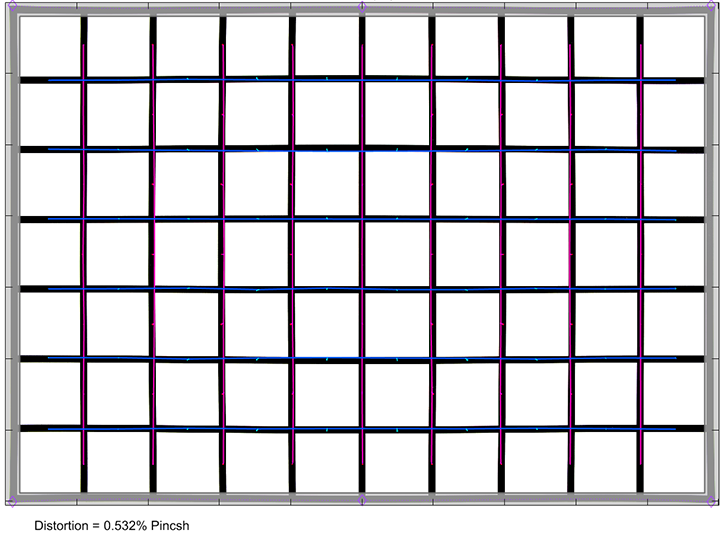|
Viltrox PFU RBMH 20mm f/1.8 ASPH (Sony FE) - Test Report / Review - Analysis |
|
Lens Reviews -
Sony Alpha (Full Format)
|
|
Page 2 of 3

Distortion
As mentioned, the Viltrox PFU RBMH 20mm f/1.8 ASPH can't take advantage of image auto-correction due to the lack of electronic coupling. However, with respect to image distortions, this isn't needed anyway. The lens produces a very low amount of pincushion distortion (0.5%) with a slight mustache-style subfrequency. That's even more impressive considering the fact that we are talking about an ultra-wide lens here and such lenses are often not overly brilliant in this respect.

Vignetting
While image distortions are not an issue, the same can't be said about vignetting. The Viltrox lens has a heavy light falloff of 2.4EV (f-stops) at f/1.8. That's, of course, rather normal for a fast, full format ultra-wide lens but you will have to deal with this yourself rather than being able to rely on the camera or converter for correcting the issue. Stopping down reduces the vignetting but it remains rather high at ~1.6EV at medium aperture settings.

MTF (resolution)
The resolution characteristic is good but not without flaws (at 42 megapixels). At a fully open aperture, the dead center is excellent and the broader inner zone is very good. However, the outer image field is soft. Stopping down to f/2.8 boosts the quality substantially. The broader center zone is excellent here and the borders/corners improve to good levels. The best results are reached between f/4 and f/5.6 where the outer image field is lifted to very good quality. Diffraction effects set in at f/8 and they are impacting the quality from f/11 reducing the quality to good levels.
The field curvature is low. The centering quality of the tested sample was Ok.
Please note that the MTF results are not directly comparable across the different systems!
Below is a simplified summary of the formal findings. The chart shows line widths per picture height (LW/PH) which can be taken as a measure for sharpness.
If you want to know more about the MTF50 figures you may check out the corresponding Imatest Explanations

Chromatic Aberrations (CAs)
Lateral CAs (colors shadows) stay below 1px on the average at the image borders. They amplify in the extreme corners though. Please note that lateral CAs can be fully removed in most RAW converters - e.g. photoshop does so automatically even without a lens profile.

Bokeh
If you buy a fast lens, you either do it for low light or shallow depth-of-field photography. In the latter case, the rendering of the out-of-focus area (aka the "bokeh") is of interest.
Ultra-wide angle lenses are usually struggling here due to the extensive use of aspherical elements that improve image quality but tend to introduce funny artifacts in out-of-focus highlights.
Interestingly, the Viltrox renders highlights nicely with a quite smooth inner zone (except a little blob if you look closely) and marginal outlining of the discs. With no less than 14(!) aperture blades, the aperture shape remains perfectly circular even at f/2.8.
 The highlight discs deteriorate to cat-eye shape in the image corners but that's a normal vignetting effect.
We didn't use our standard test scene for verifying the general blur rendition due to the extreme focal length. However, the real world sample image below may illustrate that the Viltrox lens is pretty good at it.
The highlight discs deteriorate to cat-eye shape in the image corners but that's a normal vignetting effect.
We didn't use our standard test scene for verifying the general blur rendition due to the extreme focal length. However, the real world sample image below may illustrate that the Viltrox lens is pretty good at it.

|